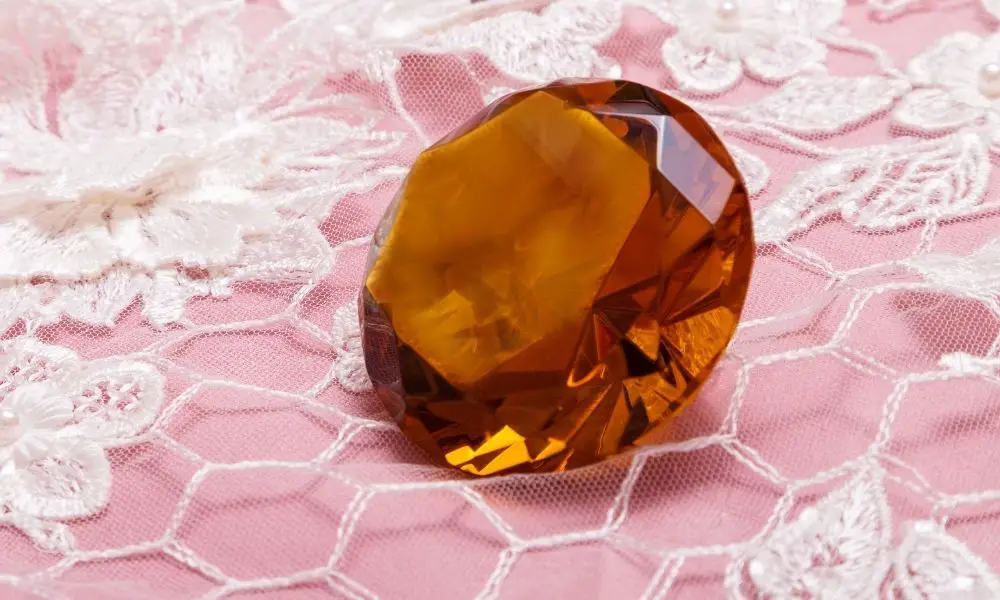

Rubies are red, sapphires are blue. The world of gemstones is a veritable rainbow—one not in the sky, but deep in the ground. However, beyond the immediate associations we make—green emeralds, purple amethyst, and black onyx—we can find captivating variations of color within classes of gems themselves.
For instance, let’s look more closely at the quintessential gem: the diamond. We think of diamonds as occurring on a spectrum from yellowish to immaculately colorless, and the less color they have, the better. While this range makes up most of the diamonds for sale, many others, the “fancy color diamonds,” fall outside that traditional continuum. How many different colors do diamonds come in? We’ll attempt to scratch the surface—something most people struggle to do to a diamond.
Other than the yellow cast of regular diamonds, these gems can come in an array of reds, pinks, and oranges, and browns as well—though brown diamonds are likely to take on more tantalizing names, such as “chocolate” or “coffee.” Additional nitrogen and pressure during the formation of a diamond will lend it a warmer hue, with nitrogen responsible for yellow, and deformation of the diamond’s lattice causing reddish tones. A natural red diamond, formed under high pressure with low nitrogen, is prohibitively rare and expensive. Yellow and brown diamonds, which purists regard as imperfect on their scale for measuring color, can still be dazzling in their own way.
For diamonds to carry undertones of blue, they must include boron in their formation. An authentic blue diamond has a strange quality—ultraviolet light will cause it to briefly appear red in the dark, a quality museumgoers can see for themselves in the famous Hope Diamond. Radiation can cause an otherwise blue diamond to shift to a greenish tint. A purple diamond results from the presence of hydrogen during its formation.
Overall, diamonds come in many different colors—gemologists will generally classify them into 27 discrete hues. Particularly conspicuous among these 27 is black. “Black diamond” is more than just a KISS song or the indicator of a tough ski slope. A real black diamond, or a carbonado, is a rare, eye-catching, and perhaps even unearthly variation on the standard diamond. Owing to their rarity—miners haven’t discovered natural black diamond in over a century—it’s quite possible that the carbon that formed them arrived from above in a meteorite, the likes of which haven’t arrived since. With carbonados occurring only in resource-rich Brazil and the Central African Republic, these possibly extraterrestrial diamonds are certainly extra special.
FAQ
Other than the yellow cast of regular diamonds, these gems can come in an array of reds, pinks, and oranges, and browns as well—though brown diamonds are likely to take on more tantalizing names, such as “chocolate” or “coffee.” Additional nitrogen and pressure during the formation of a diamond will lend it a warmer hue, with nitrogen responsible for yellow, and deformation of the diamond’s lattice causing reddish tones.
Additional Resources:
Bitcoin
Tezos
TBH
NSFW
SMH
OTP
Jewelry
Learn essential first-time landlord tips for success, from tenant screening to property maintenance. These strategies…
Every business will produce some form of waste. The real task isn’t preventing waste entirely—it’s…
Custom tailors can create unique garments that complement every inch of your body, and it’s…
Faulty wiring can ruin a perfect restoration. See how original-style harnesses preserve WWII Jeep reliability,…
Make reading more accessible for kids with dyslexia using these nine tools designed to build…
Optimize your food processing facility by better understanding the critical ways gases can impact electrical…